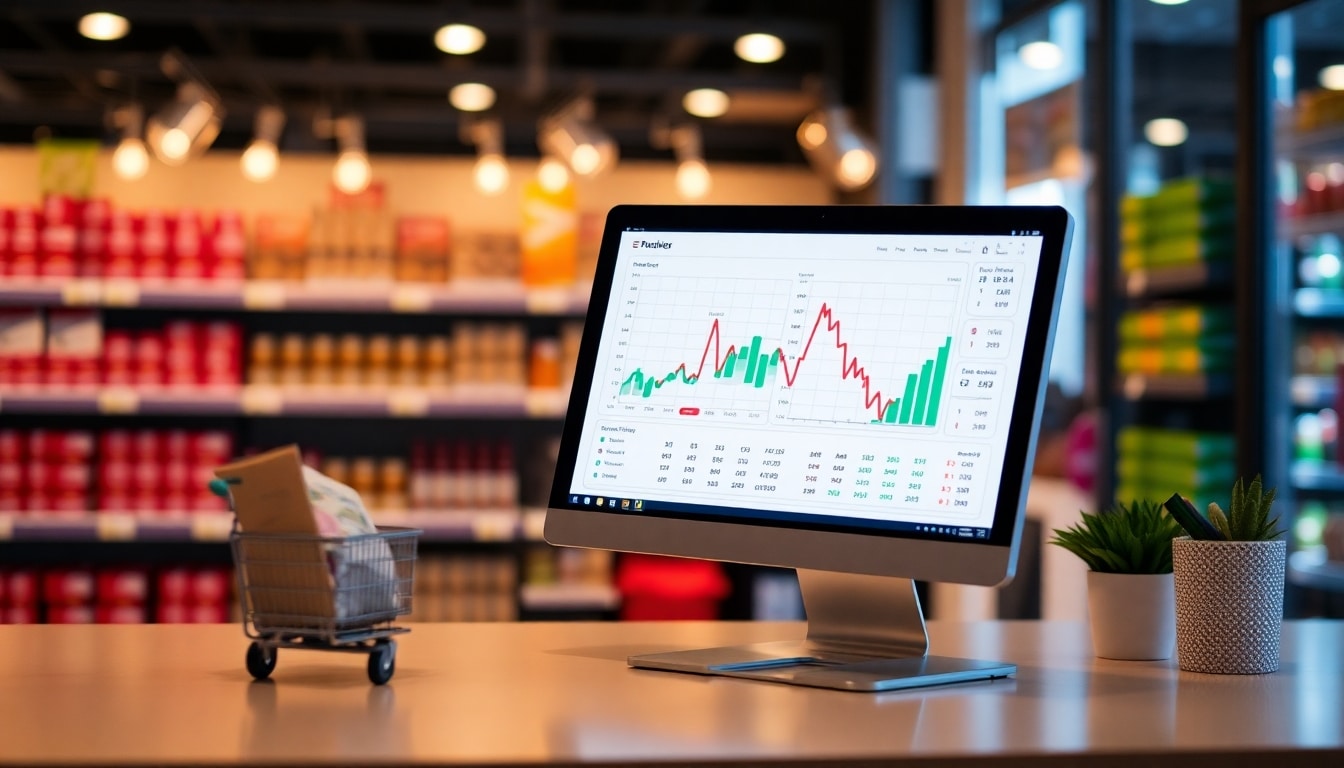The Role of Price Monitoring in Maintaining Competitive Pricing
Price monitoring in e-commerce has evolved from a competitive advantage to a survival necessity. Consider these statistics:
- 80% of consumers compare prices online before making a purchase.
- Retailers change prices on 15-20% of their product catalog daily.
- Price monitoring tools can improve profit margins by 10-15% on average.
- 87% of consumers say competitive pricing is a key factor in store selection.
- Businesses using AI-driven price monitoring see a 50% reduction in manual pricing workload.
- Dynamic pricing can increase conversion rates by up to 10%.
- 90% of top e-commerce retailers use some form of price monitoring.
Benefits of Price Monitoring
Implementing robust price monitoring strategies yields numerous advantages for online businesses:
- Enhanced Competitiveness: Staying abreast of market rates ensures your offerings remain attractive to price-conscious consumers.
- Optimized Profit Margins: Balancing competitive pricing with profitability becomes more precise, maximizing revenue without unnecessary price cuts.
- Improved Customer Loyalty: Consistently fair pricing builds trust and encourages repeat purchases.
- Informed Decision-Making: Data-driven insights enable strategic pricing decisions aligned with market demands and business goals.
- Rapid Response to Market Changes: Swift adaptability to competitor price changes and market trends preserves market share.
- Identification of New Opportunities: Analysis of pricing data can reveal untapped market segments or product niches.
Key Components of Effective Price Monitoring
An effective price monitoring system comprises several crucial elements that work in concert to provide comprehensive market insights:
- Data Accuracy: The foundation of reliable price monitoring lies in the quality and accuracy of data collected. This involves employing robust web scraping technologies and APIs that can navigate complex website structures and extract precise pricing information.
- Competitor Identification: Defining a relevant set of competitors is critical. This includes direct competitors, as well as indirect ones who might influence market pricing. The system should be flexible enough to add or remove competitors as the market landscape evolves.
- Real-Time Monitoring: In the fast-paced e-commerce environment, delays in data can lead to missed opportunities. Effective systems provide near real-time updates, allowing businesses to react swiftly to market changes.
- Product Matching: Advanced algorithms are essential for accurate product matching across different platforms, considering variations in product names, specifications, and bundling.
- Historical Data Analysis: Tracking price changes over time reveals patterns and seasonality, enabling businesses to anticipate future trends and plan accordingly.
- Customizable Alerts: Automated notifications for significant price changes, stock availability, or new product launches help businesses stay proactive in their pricing strategies.
- Integration Capabilities: The ability to seamlessly integrate with existing e-commerce platforms and ERP systems ensures that insights can be quickly actioned across the organization.
Data Collection and Analysis
The data collection process in price monitoring is multifaceted, involving:
- Web Crawling: Automated bots that systematically browse websites to extract pricing information.
- API Integration: Direct data feeds from marketplaces or competitors, where available.
- Image Recognition: Advanced systems can extract pricing from images, expanding data collection capabilities.
Once collected, this data undergoes rigorous analysis:
- Normalization: Standardizing data formats for accurate comparisons.
- Outlier Detection: Identifying and addressing anomalies that could skew results.
- Trend Analysis: Applying statistical models to detect patterns and predict future price movements.
- Competitive Positioning: Assessing how a business’s pricing compares to the market average and key competitors.
Technology and Tools
Modern price monitoring leverages cutting-edge technologies:
- AI and Machine Learning: These technologies enhance pattern recognition, improve product matching accuracy, and provide predictive analytics for future pricing trends.
- Big Data Processing: Handling vast amounts of pricing data requires robust infrastructure capable of processing and analyzing information in real-time.
- Cloud-Based Solutions: Offering scalability and accessibility, cloud platforms enable businesses to monitor prices across global markets efficiently.
- Visualization Tools: Advanced dashboards and reporting features translate complex data into actionable insights through intuitive graphs and charts.
- Dynamic Pricing Engines: Some advanced tools can automatically adjust prices based on predefined rules and real-time market data.
Implementing Price Monitoring Strategies
Effective implementation of price monitoring requires a structured approach:
- Define Objectives: Clearly articulate what you aim to achieve through price monitoring, whether it’s increasing market share, maximizing profits, or maintaining a specific competitive position.
- Identify Key Products: Focus on high-impact items that significantly influence your business performance.
- Select Monitoring Frequency: Determine how often to update pricing data based on market volatility and product characteristics.
- Establish Pricing Rules: Create guidelines for price adjustments, including minimum and maximum thresholds, to maintain profitability and brand positioning.
- Integrate with Existing Systems: Ensure seamless data flow between price monitoring tools and your e-commerce platform for swift execution of pricing decisions.
- Train Your Team: Equip staff with the skills to interpret and act on pricing insights effectively.
- Test and Iterate: Continuously assess the impact of your pricing strategies and refine your approach based on results and market responses.

Best Practices for Price Monitoring
To maximize the benefits of price monitoring:
- Prioritize data quality over quantity to ensure actionable insights.
- Consider factors beyond price, such as shipping costs and product bundling.
- Monitor customer feedback to gauge the impact of pricing changes on perception.
- Regularly review and update your competitor list to stay relevant.
- Use A/B testing to fine-tune pricing strategies.
- Maintain a balance between automated responses and human oversight to avoid pricing wars or brand dilution.
Challenges in Price Monitoring
Despite its benefits, price monitoring faces several challenges:
- Data Accuracy: Ensuring the reliability of collected data, especially when dealing with dynamic pricing and promotions.
- Product Matching Complexity: Accurately comparing products across different platforms with varying specifications or bundling options.
- Regulatory Compliance: Navigating legal constraints on pricing practices, particularly in industries with strict regulations.
- Overreliance on Automation: The risk of neglecting qualitative factors that influence pricing decisions.
- Resource Intensity: Managing the substantial computational and human resources required for comprehensive monitoring.
- Market Saturation: Differentiating oneself in a market where competitors are also leveraging similar price monitoring tools.
The Future of Price Monitoring
The evolution of price monitoring is shaped by emerging technologies:
- AI-Driven Predictive Pricing: Utilizing machine learning to anticipate market changes and adjust prices proactively.
- IoT Integration: Incorporating real-time data from connected devices to inform pricing strategies.
- Blockchain for Transparency: Enhancing trust and accuracy in price data collection and sharing.
- Personalized Pricing at Scale: Leveraging big data to offer individualized prices based on customer behavior and preferences.
- Cross-Channel Price Optimization: Harmonizing pricing strategies across multiple sales channels and marketplaces.








